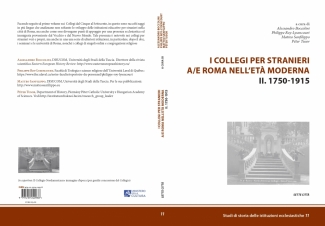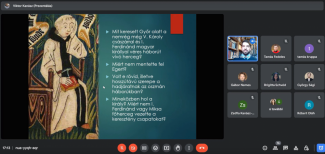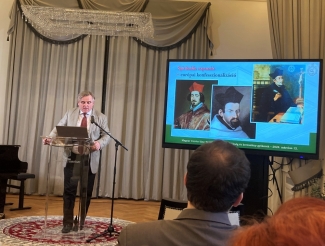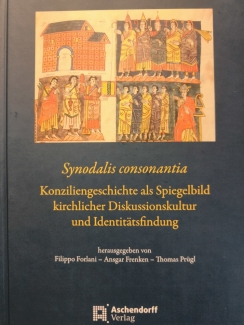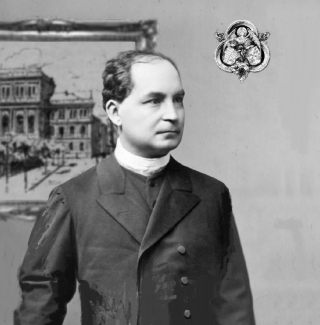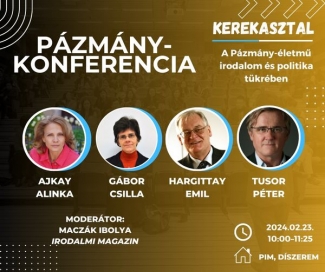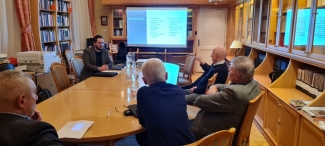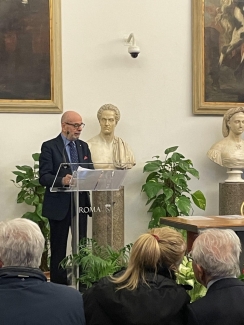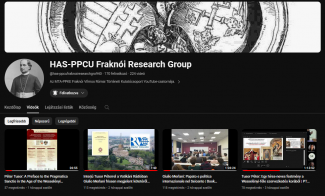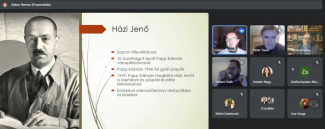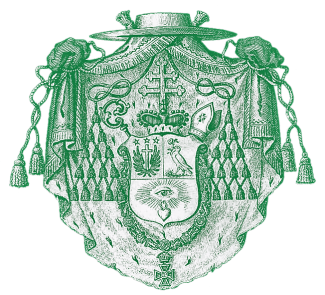The 'Bishop's Lexicon 1804–1918', the first phase of the Fraknói Research Group's extensive project spanning multiple grant cycles, concluded on Pentecost in 2020. The results of the comprehensive international collaboration are encompassed in the impressive volume published by Duncker & Humblot in Berlin: Die Bischöfe der Donuaumonarchie 1804 bis 1918. Ein amtsbiographisches Lexikon, Herausgegeben von Rupert Klieber, Band I: Die röm.-kath. Kirchenprovinzen Gran, Kalocsa, Erlau im Königreich Ungarn, unter Mitarbeit von Péter Tusor, Duncker & Humblot, Berlin 2020 (xviii + 661 p). Further details and the international dimensions of the research: here, presentations in Budapest, Rome, Vienna. In exploring the 'long 19th century', the Research Group focused on diocesan histories that also encompass foundational research from the Vatican. The project itself has Roman origins, built upon the archival cooperation between the initiating Campo Santo Teutonico rector, Erwin Gatz († 2011), and the editor-in-chief, Rupert Klieber.
The second phase, the Hungarian-language version ('Püspöklexikon 1804–1918'), concluded its main work by Christmas 2023. This edition represents an improved and expanded version. Following the original concept, it includes the ordinaries of the Greek Catholic eparchies in Hungary (which are expected to be separately featured in an 'imperial' volume in the German version). While in the German edition, Rupert Klieber was the ultima manus, here the authors themselves are responsible for the entries. Therefore, the completeness of the research project and its results can only be assessed and interpreted in consideration of the Hungarian edition. During the editing process, Professor Klieber, along with his colleagues, extensively reworked, standardized, and expanded the entries using new archival and printed sources, as well as German academic data. In most cases, Hungarian authors and editors worked further using this material translated back into Hungarian by Zsófia Szirtes. The results of Professor Klieber's approach have been generally retained. In some biographies, the original positions of the authors have been more strongly emphasized. The authors are solely responsible for the entries in the Hungarian edition. Concerning the descriptions of the dioceses, we directly quote Professor Klieber's distinguishable statistical analyses from the German edition. This two-step research concept evolved interactively between Vienna and Budapest during the almost 'longue durée' project, and it was finalized in 2018–2019. The updating of the entries was significantly prompted by the extensive time span of the research before the Hungarian edition. (For details on the textual work, Zsófia Szirtes, the editor-in-chief of the Hungarian edition, provides information.) The academic data reflects the state of 2023. Inevitable errors in the first German edition were mostly corrected. (The detailed Errata & Corrigenda for the German version will be accessible online after the corrected Hungarian edition is printed.)
In the case of entries authored by Slovak contributors for the dioceses in the Felvidék (territory of present-day Slovakia), at Professor Klieber's suggestion, we have translated the German version and focused only on checking the data and expanding the bibliography. Slovak authors only partially used the Hungarian academic literature, particularly the older sources. Interpretations significantly differing from the perspective of Hungarian historiography will be commented on in the introductions of the online edition, except for the introductions to two dioceses. Despite experiences gained during the international research conducted from 2006 to 2008 and effectively launched in spring 2009, detailed discussions about our distinct and interpreted shared history with Slovak colleagues through Vienna have not yet taken place. It is of great significance that in 2020, on the 100th anniversary of the Trianon tragedy, we managed to ensure, despite certain tendentious and one-sided claims, that Hungarian history is fundamentally present as Hungarian and not as any other history in the prestigious international publication released in Berlin. This goal was achieved through numerous compromises, which inevitably encountered failures in the search process. Such was the case with our request concerning the histories of the Nyitra and Besztercebánya bishoprics. The presentation of the history of these two dioceses remained somewhat one-sided in the German edition. (See point 4 of the editorial documentation dated March 5, 2019, addressed to Vienna, for historiographically intriguing editing details.)
Behind this extensive research are no ERC millions. However, the significance of the results in understanding and comprehending the history of Central Europe has been acknowledged at the highest level by international scholars, from Joachim Bahlcke to Andreas Gottsmann and Thomas Winkelbauer. (Further reviews and presentations can be found here.) Apart from the initial capital provided by Erwin Gatz, this was achieved solely through the Austrian Science Fund (Österreichisches Wissenschaftsfonds) and the MTA Lendület Program (as well as a fraction of the Fraknói Research Group's budget between 2017 and 2024). Initially, in 2024, the introductory text by the project's most esteemed author, Gábor Adriányi, and individual dioceses will be published separately in e-fascicules. In the case of the latter, the biographies of all bishops of the respective diocese will be available. Following the publication of all e-fascicules, the volume will be released digitally (e-lib.) and in print in 2025. Currently, on Epiphany 2024, alongside Gábor Adriányi's introduction, the entries for Székesfehérvár, Győr, and Pannonhalma will be made Open Access.
The Hungarian edition is the result of the editorial work by Zsófia Szirtes, Péter Tusor, and Rupert Klieber, with contributions from István Fazekas and András Forgó. The editorial tasks are carried out by Zita Lőrincz. Special thanks go to Margit Balogh for the diocesan introductions and her valuable advice. Adrienne Tengely's meticulous professional editing and augmentation of the entries authored by Slovak contributors, the rewriting of the entries for Eger and Szatmár, and the verification and update of all (!) Greek Catholic entries by Tamás Véghseő are also acknowledged. And gratitude is extended to all authors from Székesfehérvár, Szombathely, Pécs, Szeged, Eger, Nyíregyháza; from Gyulafehérvár, Kolozsvár, Marosvásárhely; from the Felvidék/Slovakia, Transcarpathia; and of course from Vienna and Budapest. Among the authors, Gheorghe Gorun from Nagyvárad, László Bura from Szatmár, and Balázs Csíky, a Bolyai Fellow of the Fraknói Research Group, unfortunately did not live to see the completion of the Bishop's Lexicon.
The Bishop's Lexicon 1804–1918 marks the beginning of the millennial historical dimension project of the Fraknói Research Group, the Moravcsik Gyula Institute, and the Collegium Professorum Hungarorum. Following the example of the German research spearheaded by Erwin Gatz, a lexicon of Hungarian bishops from 1001 to 1993 will be prepared. The planned volumes include: Bishop's Lexicon 1918–1993; Bishop's Lexicon 1711–1804; Bishop's Lexicon 1605–1711;1526–1605, Bishop's Lexicon 1458–1526; Bishop's Lexicon 1302–1458; Bishop's Lexicon 1001–1302. In anticipation of the Mohács anniversary, the manuscript of the lexicon of the Hunyadi–Jagelló era is nearing completion. Refer to the report by editor-in-chief Tamás Fedeles for details on this and the entire project.

